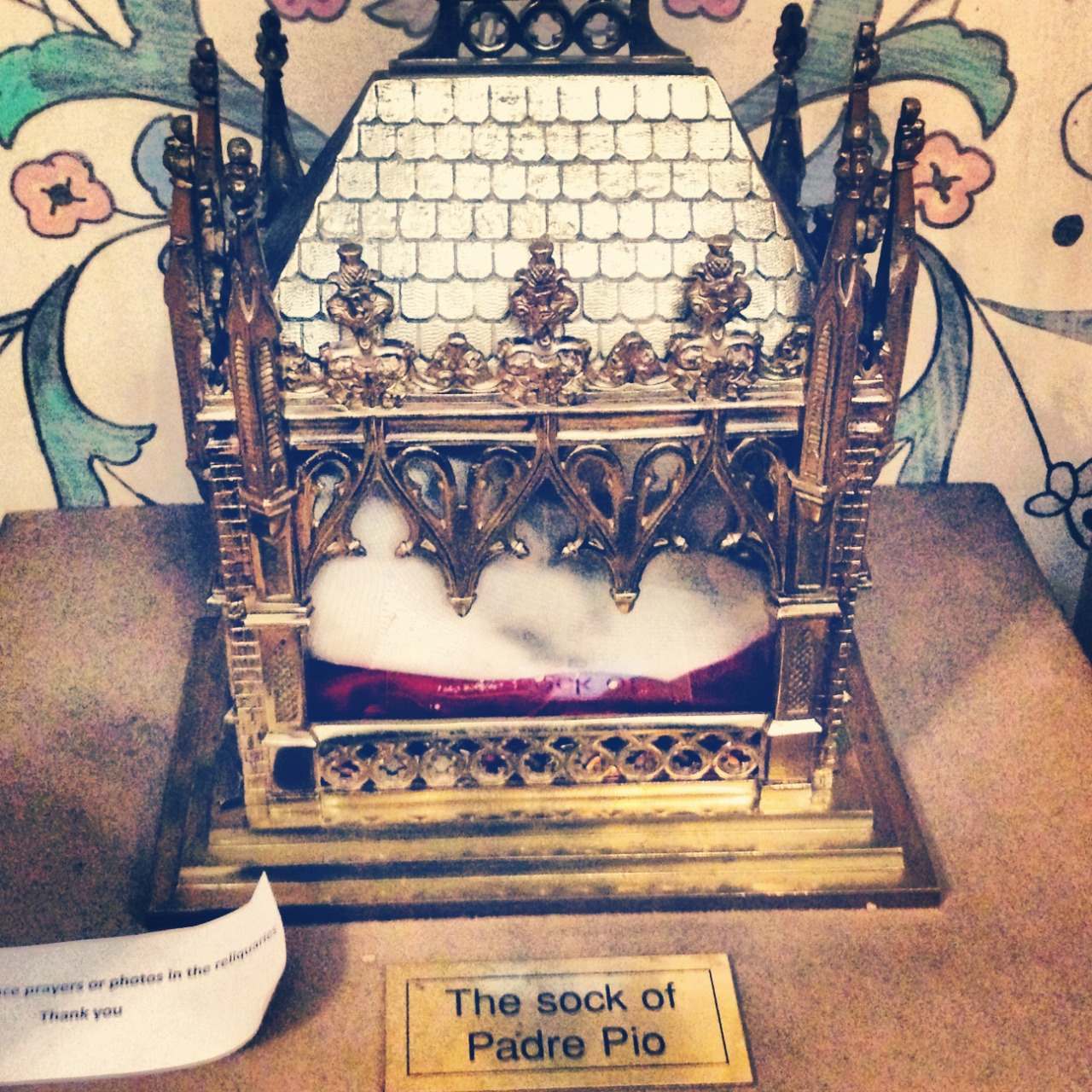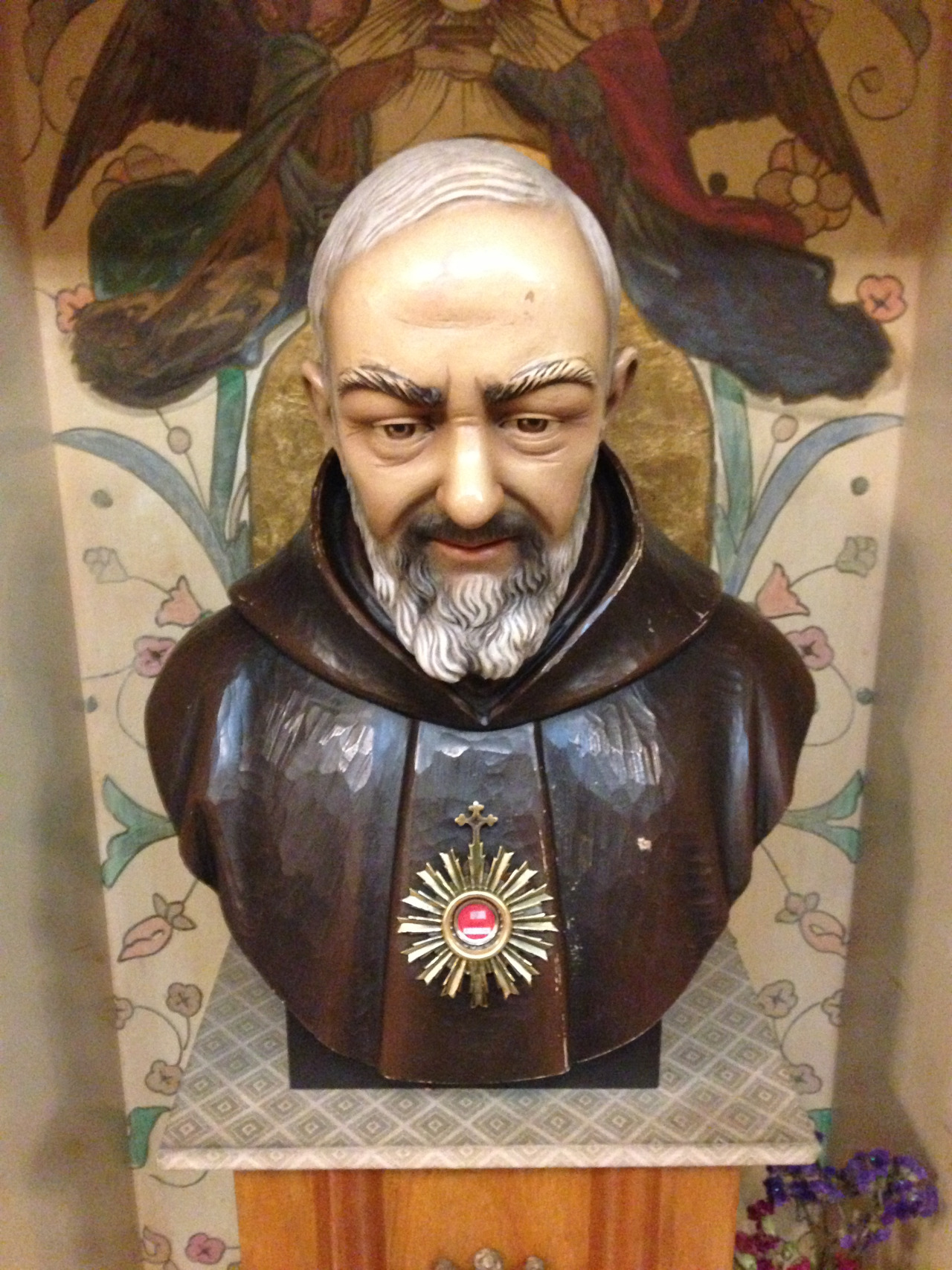They Don't Make 'Em Like They Used To: The Flying, Stigmatic Saint from the 1960s
I went out to look at holy relics and I found myself staring at a dirty white gym sock. The sock is housed in a church across the street from Macy’s Herald Square in New York City. It’s in a reliquary instead of a hamper because it’s been stained with the blood of St. Pio of Pietrelcina, aka Padre Pio- Italian priest, stigmatic, and alleged psychopath. He died in 1968 and in some parts of Italy he is more popular than Christ Himself.
To the rational mind, saints from the middle ages are fairly comprehensible. They’re the relics from the bad old days when people lived miserable, superstitious, and probably stinky lives. We picture them worshiping a God of the gaps. A God who seemed to enjoy giving humans the ability to live on a pillar or plow a field really fast as much as He enjoyed healing the sick and feeding the hungry.
We have little need for the supernatural anymore. Modern saints like Elizabeth Ann Seton and Mother Cabrini ran schools and hospitals. They certainly did not fly. Supernatural feats are best left to saints whose relics are collecting dust in obscure Sicilian towns (or so I thought). But here was a shrine dedicated to a man who seemed inextricably tied to this older idea of sainthood while living in a post-Vatican II world.
Padre Pio claimed enough supernatural powers and miracles to canonize 20 medieval saints. He could read minds in the confessional and identify those possessed by Satan. He cured the incurable. He could be in two places at once, levitate, communicate with the dead and tell the future, sometimes while battling a 118-degree fever. He had the odor of sanctity, a supernatural smell of roses that emanated from his body. He could send that smell to far-away followers. He bore the stigmata, the wounds of Christ, yet was tortured by Satan in the form of a black cat or nude girls. Sometimes Satan would tear his clothes off and beat him until he could hardly move but other times he would disguise himself as his spiritual director or the Virgin Mary. His visions were so intense and so numerous, it became difficult for him to discern which were good and which were evil.
The Vatican was incredulous. They denied the supernatural claims as accusations of sexual impropriety swirled around the charismatic priest. Brother Agostino Gemelli, a trained physician and neuropsychiatric scientist was sent from Rome to San Giovanni Rotondo to investigate the stigmata. He infamously called Pio “an ignorant and self-mutilating psychopath who exploited people’s credulity”. Between 1923 and 1933 Pio was censured by degrees until he was finally forbidden to say public mass or interact with anyone seeking spiritual guidance.
As power in Rome shifted, so did Pio’s standing within the church. Pope Pius XI called him “a noxious Socrates, capable of perverting the fragile lives and souls of boys” but then reversed his opinion and lifted his censures on him. Pio found a powerful ally in his successor Pope Pius XII. But by the 1940s new accusations of fraud and corruption tarnished his reputation again and Pope John XXIII had the legendary “Maccari dossier” compiled. It was a 200-page report compiled by Monsignor Carlo Maccari detailing the allegations against Padre Pio, particularly those charges of licentiousness brought against him by the local women. At the time it was thought to be a permanent roadblock to sainthood but it was never published in full.
Through all of the controversy, his popularity never waned and in 1947 he heard the confession of a young Karol Wojtyla. When Wojtyla became an archbishop, he asked Pio to intervene on behalf of a friend with throat cancer. The friend recovered 11 days later and Wojtyla went on to become Pope John Paul II.
The rest is (recent) history. Pope John Paul II canonized him in 2002 in front of a crowd of 300,000. In 2008 his incorrupt body was exhumed and placed on display in a gold-plated Renzo Piano-designed crypt- another startling juxtaposition of modern and medieval. 7 million pilgrims visit every year despite the continued intrusion of the modern world. They seem unfazed by the reluctant admittance that his odor of sanctity was found to be eau-de-cologne or the new evidence found in the Vatican library that seems to indicate he kept his stigmata fresh with carbolic acid. In some ways, it’s too late. Though the Church seems reticent to use the title of saint in his name, his sainthood is backed by papal infallibility. And as journalist Vittorio Messori said, “If we decide to send Padre Pio back to the Middle Ages, truckloads of people will have to go with him.”



